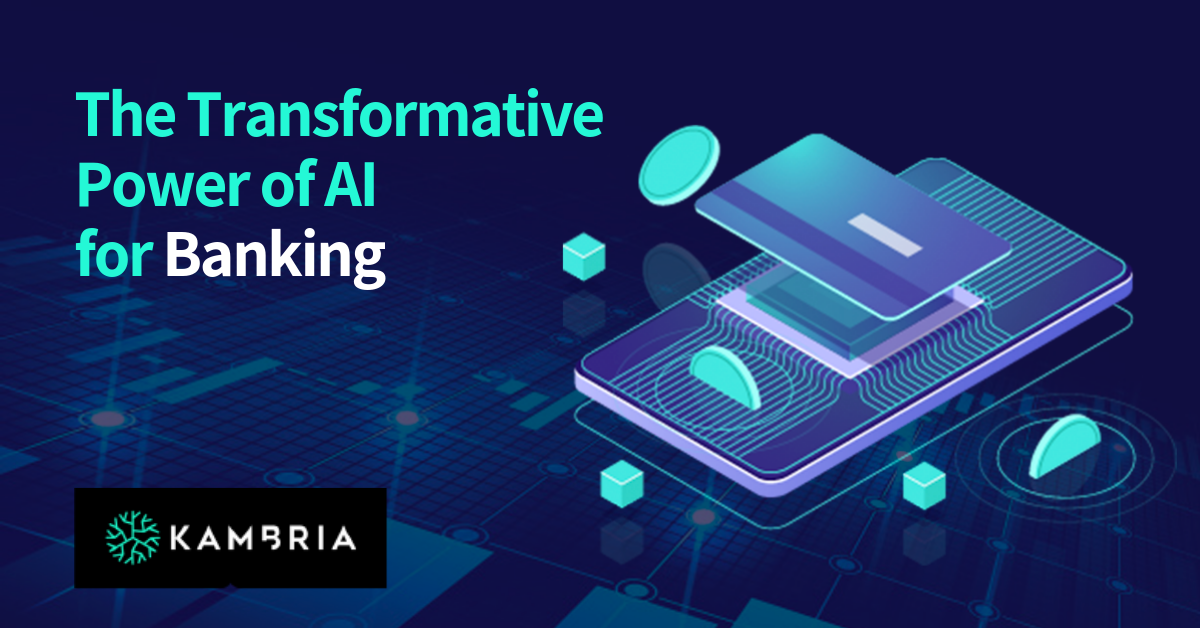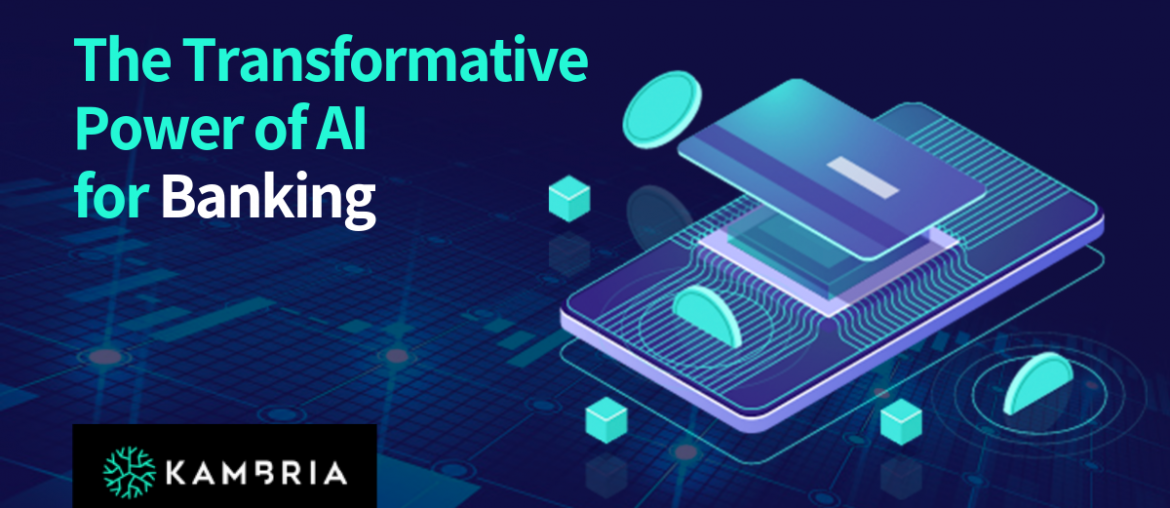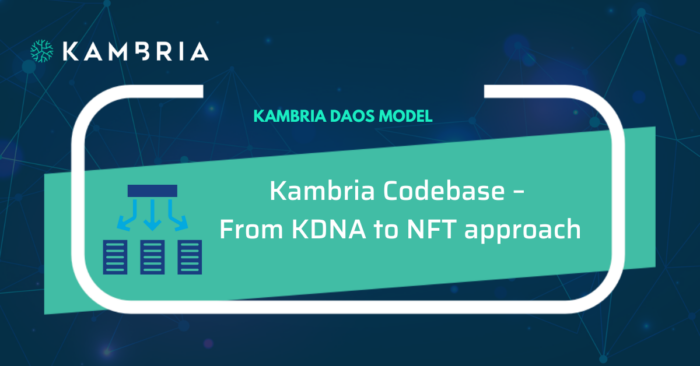
Artificial intelligence has the power to transform how banks operate. AI can change how banks do everything from interacting with customers to ensuring regulatory compliance.
Yet despite the fact that AI holds massive potential benefits for banks, use of AI also comes with its share of challenges. It’s important to be aware of both the possibilities and pitfalls if a bank intends to employ AI in its operations.
The Importance of AI for Banks
Why exactly is AI important for the banking industry? Let’s first consider how AI can be used in incredibly diverse fashions.
Artificial intelligence can be employed in everything from enhancing fraud detection measures to communicating with customers. There are so many possible applications for AI in banking it can actually be a little overwhelming.
Therefore, we will focus on just a few of the main applications for AI in the banking sector.
The main applications for AI in banking are going to be in one of three areas:
- Customer support
- Financial transactions
- Administrative practices
Customer Support
Customer support applications include things like the automation of email, the creation of customer self-service portals, and social media management. Many of the frustrations customers have, like an inability to make important financial transactions after hours, can be alleviated with the use of AI.
Financial Transactions
Speaking of financial transactions, automating transactions like regular transfers between accounts or automating aspects of fraud detection (like unusual activity patterns) can help banks save time. Automating these important but time-consuming tasks can free up bank personnel to tackle other issues.
Administrative Practices
Banks have to abide by many regulatory practices, and the task of ensuring regulatory compliance can often be frustrating and time-consuming. Carrying out audits and filing important paperwork could be automated to an extent, with AI algorithms comparing any recorded changes in operating procedure with stated regulatory goals.
AI has the power to make massive changes in these three sectors of banking operations, helping to empower customers, safeguard against fraud, protect against costly regulatory infractions, and generally save time and resources.
Yet for all the benefits that AI can bring to banks, it wasn’t always this way. Why is it only recently that many banking systems and technologies have seen automation and improvement through AI?
The Evolution of AI in Banking
For basically as long as the concepts of automation and artificial intelligence have existed, people have wanted to use them to make improvements to financial systems. Yet it would take over half a century for AI systems to start being genuinely useful and robust for banking applications.
As far back as the 1950s and 1960s, people were interested in automating aspects of banking and accounting using computers that could do calculations faster than humans. However, there were many practical issues that made this difficult.
Some of the mathematical models used to do financial calculations weren’t in vogue back then. A lot of research would have to be done into Bayesian statistics, which is used by many machine learning methods, in order to develop algorithms useful for calculation of probabilities regarding tasks like auditing, stock market prediction, and loan repayments.
The second thing missing from the equation was computer power itself. Advances in computer power throughout the 80s and 90s paved much of the road for the current use of AI in the banking sector.
Powerful, new computers and computing projects like the Japanese 5th Generation Computer Project and the Strategic Computing Initiative by DARPA poured millions of dollars into developing sophisticated computer processors. The development of the World Wide Web also provided large amounts of data for analysis.
These events, coupled with a rising interest in Artificial Neural Networks and Expert Systems set the stage for the machine learning revolution of the late 2000s. In 2009, Andrew Ng and other researchers at Stanford University advanced deep neural networks by training them on GPUs instead of CPUs, exponentially decreasing the amount of time required to train machine learning models.
Thanks to further refinements in the creation and training of deep neural networks, the use of AI for tasks like fraud detection, sophisticated chatbots, and price point optimization became feasible.
Machine Learning and Deep Learning Use Cases
It is thanks to recent advances in AI that doings things like creating chatbots for customer service and combating money-laundering became possible. With all the different applications that AI can have in this era of banking, what are some of the most promising and reliable uses for machine learning/deep learning frameworks?
Fraud Detection
As previously mentioned, fraud detection is one of the most useful applications for machine learning in banking. Machine learning/deep learning algorithms can be used to enable fraud detection by analyzing samples of normal and suspect transactions to distinguish patterns common to each.
A predictive model can then be created which will flag suspicious activity, and the model can then be tested and deployed. One example of banks utilizing machine learning for fraud detection is Citibank, which has invested heavily in a fraud detection company called FeedzAi.
Digital Assistants/Customer Support
Digital assistants can be developed to make customer support easier and simpler. Digital assistants created for banks allow customers to manage their finances better, by providing them with easy access to financial management tools 24/7.
Digital assistants can also answer common questions for customers. Bank of America was an early adopter of mobile banking technology and they have invested in digital assistants, creating the virtual assistant Erica in 2016.
Risk Modeling
Investment banks can benefit from deep learning/machine learning algorithms by creating risk management models. By combining Big Data and machine learning algorithms to analyze investment trends, banks can get a better insight into which investments are potentially lucrative and which are potentially dangerous.
Automating Business Correspondence
Banks can make use of natural language processing and machine learning algorithms to automate aspects of business correspondence. Predictive text systems can be used alongside response templates to generate responses.
Machine learning algorithms can also be used to analyze the content of received documents, inserting them into the right database or automatically forwarding emails to authorized people. For example, JP Morgan Chase has invested in a machine learning platform designed to analyze legal documents and automatically collect important data from them.
Emerging AI Problems
However, while AI is becoming more powerful and sophisticated, improving its usefulness overall, there are still many problems associated with AI in the banking sector.
Biased Data
One of the issues that banks are struggling with, concerning AI, is the use of algorithms that discriminate and perpetuate bias against vulnerable groups of people. Machine learning algorithms are only as good as the data they are trained on, and when datasets contain bias the algorithms will perpetuate that bias.
When banks make use of certain algorithms designed to determine an individual’s suitability for a loan, even though sensitive attributes like race or sex are not trained on, other training features may create approximations of these sensitive variables. In other words, even when engineers of algorithms try to account for bias, algorithms can still end up discriminatory.
Poisoned Data
Another problem that comes with the increasing adoption of AI is cyberattacks intended to compromise the integrity of the data the algorithms rely on. Data poisoning describes the malicious manipulation of a model’s training data.
Using data poisoning, cyberattackers can exploit a bank’s algorithms to generate fake information about companies or firms, create incorrect predictions of trading consequences, and skew risk modeling in their favor.
How Are AI Problems Being Addressed?
Machine learning researchers and engineers are working on various tactics to solve the problems described above. In terms of debiasing datasets and fighting AI-based discrimination, researchers have created tests to detect potential bias in algorithms. Engineers have also created new algorithms and training procedures intended to reduce bias and determine how much influence a given feature has on an algorithm.
In terms of fighting back against data poisoning, there are several methods that researchers suggest AI architects can use. One technique is to train AI algorithms on samples of “poisoned” data, which can help make the network more resilient to data poisoning attacks.
Another method is creating ensemble models that use multiple different algorithms to interpret data and then average the resulting predictions together, with the goal being to cancel out the effect of the manipulations. While these techniques weren’t designed explicitly for the banking industry, the general principles are applicable to the industry.
What Are the Results?
These problems are fairly new in the history of banking, and the techniques to solve them even newer. For this reason, there hasn’t been much research on the effectiveness of these techniques in the long term.
Few completed studies have examined the effect of bias reduction techniques. However, the discussion around the issue has motivated some companies to take action and around 34% of all companies have instituted internal controls to deal with AI discrimination, while 95% of companies say they are taking steps towards addressing the issue.
In regards to dealing with data poisoning attacks, AI developers have recently developed toolkits to detect and deal with comprised data. Methods for flagging potentially compromised data, shifting neural network architectures to prevent the flow of adversarial inputs through the network, and measuring a network’s resilience to altered data have all been developed.
Summing Up
As the power and potential of AI increases, more and more banks and financial institutions will adopt AI-based applications. These applications have the ability to dramatically enhance a bank’s efficiency, accessibility, customer support and versatility.
However, with all the possibilities that are afforded by AI, many new challenges have arisen as well. It will be up to bank administrations to be sure that their use of AI is ethical and secure.
Open Call for Writers
Do you like writing about tech topics like this one? Then join the Kambria Content Challenge and share your insight and expertise with our growing developer community. You could receive over $200 for the best submission. For complete details about our Content Challenge, click here.








